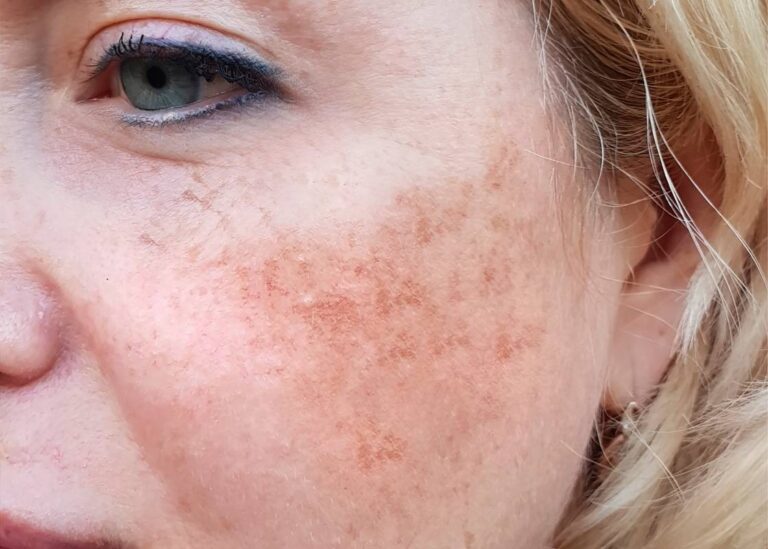Melasma is one of the most persistent and emotionally distressing pigmentation concerns. It appears as brown or grayish patches on the cheeks, forehead, upper lip, and nose, often triggered by hormones, sun exposure, or skin irritation.
While countless treatments promise to erase it, melasma is notorious for recurring — even after months of diligent care. So, can it ever truly go away? According to dermatologists, the answer depends on your skin type, lifestyle, and how early you seek expert help from a melasma doctor in Singapore.
Understanding Why Melasma Forms

Melasma occurs when melanocytes — the pigment-producing cells in your skin — become overactive and deposit excess melanin in deeper skin layers. Unlike regular sunspots that fade easily, melasma is driven by multiple triggers:
- Hormonal fluctuations such as pregnancy, birth control, or thyroid disorders
- UV and visible light exposure that activate melanin production
- Heat and inflammation from harsh products or procedures
- Genetic predisposition that makes skin more sensitive to pigment changes
Because these triggers often overlap, melasma requires comprehensive management rather than a single solution.
Why Melasma Is So Hard to Eliminate
Melasma is not just a surface discoloration; it affects both the epidermal (outer) and dermal (deeper) layers of skin. Treatments that only target surface pigment — such as lightening creams or superficial peels — may offer temporary improvement but don’t address underlying cellular hyperactivity. Once treatment stops or triggers return, pigment production often rebounds.
Even advanced procedures like lasers or chemical peels must be approached carefully. Aggressive treatments can sometimes worsen pigmentation by inflaming the skin, prompting melanocytes to produce even more pigment in defense.
Can Melasma Ever Go Away Completely?

Dermatologists explain that while melasma can be significantly reduced and well-controlled, complete and permanent clearance is rare. The condition tends to go into remission — meaning pigmentation fades to the point where it’s barely visible — but it can reappear with sun exposure, hormonal shifts, or irritation.
The goal of treatment, therefore, is long-term management rather than a quick cure. With consistent care and professional guidance, many people maintain clear, even-toned skin for years.
How Dermatologists Treat Melasma
1. Accurate Diagnosis
A professional diagnosis helps determine whether pigmentation is epidermal, dermal, or mixed. This guides the right combination of treatments while minimizing risk of rebound pigmentation.
2. Customized Treatment Plan
A melasma doctor in Singapore typically combines several modalities to achieve optimal results:
- Topical depigmenting agents such as hydroquinone, tranexamic acid, arbutin, and kojic acid to inhibit melanin production
- Chemical peels that exfoliate damaged cells and enhance ingredient penetration
- Laser and light therapies (like Pico or Q-switched lasers) performed conservatively to minimize heat and inflammation
- Oral or topical tranexamic acid to stabilize pigment activity in resistant cases
- Medical-grade sunscreen and antioxidant serums to protect against UV and blue light damage
3. Barrier Repair and Maintenance
Barrier health is crucial in melasma management. When the skin is inflamed or over-exfoliated, treatments become less effective and pigment rebounds faster. Dermatologists often start with gentle barrier repair before introducing brightening actives.
The Importance of Sun and Heat Protection

Sun exposure remains the strongest trigger for melasma recurrence. Daily use of broad-spectrum SPF 50 sunscreen, even indoors, is non-negotiable. Protective habits such as wearing hats, avoiding peak sunlight hours, and limiting exposure to heat sources like saunas or hot yoga also make a difference.
Visible light from screens and indoor lighting can worsen pigmentation too, which is why tinted sunscreens with iron oxides are increasingly recommended.
Managing Expectations: Gradual, Not Instant
Visible improvement typically takes several months. Pigment suppression is a slow biological process, and overly aggressive attempts often lead to inflammation and setback. Dermatologists advise consistency — not intensity — as the foundation for lasting results. Maintenance therapy with mild actives, antioxidants, and regular professional reviews helps keep melasma under control.
When to See a Melasma Specialist
If pigmentation spreads, darkens, or resists over-the-counter products, it’s time to consult a professional. A board-certified melasma doctor in Singapore can identify subtle triggers, customize combination therapies, and monitor your skin’s response safely. Early intervention also prevents the pigment from settling deeper, where treatment becomes more challenging.
Conclusion
Melasma may not vanish forever, but with the right diagnosis, tailored treatment, and consistent maintenance, it can be kept nearly invisible. The key is patience — understanding that melasma is a chronic condition, not a flaw that needs to be erased overnight.
Partnering with an experienced melasma doctor in Singapore ensures your treatment addresses both surface pigment and internal triggers. With professional guidance and disciplined care, you can achieve clearer, more even-toned, and healthy skin — and keep melasma from taking control again.

